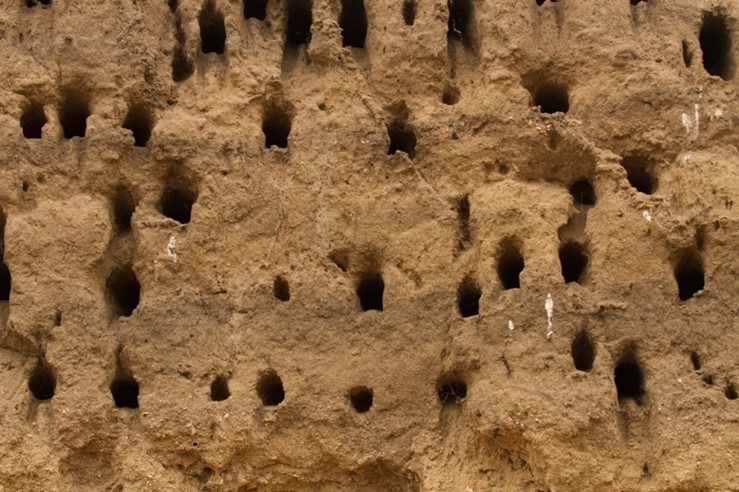August 2021
Bee-eater colony
Share:
Bee-eater colony
We have recently found something that you would more regularly associate with parts of Botswana or Zambia, a very active nesting colony of white-fronted bee-eaters (Merops bullockoides), one of the most striking little birds on the property. Now, like the name suggests, they are probably most well known for their diet which consist mainly of bees and other flying insects, they also have a remarkable bit of behaviour with this whereby, once catching their prey they have a favourite perch or branch where they land and will rub the bee until the sting is out. Only once it is out will they consume it!

We found the colony by complete chance while following the two Tslala females to the river's edge, where their presence alone flushed the entire colony out of their nests. While we knew we had a lot in the area along the river west of the lodges I was pleasantly surprised how large the colony is. Although we have an impressive river frontage these birds are very specific when it comes to nesting requirements. Demanding a shear bank of vertical sand near watercourses, these banks need to be quite high with the belief being that it avoids any flooding in the beginning of the wet season. They then dig out perpendicular burrows believed to run as deep as 1m long.
Where these little birds become very interesting is how complex their social structure is. Although they are monogamous they are also very often cooperative breeders, whereby non breeding individuals will help close genetic relatives raise offspring, and although this is not unusual in mammals it is quite rare amongst birds. This behaviour benefits the numbers and success rate of raising offspring within a colony.
I hope with us spending more time around them they become more used to
our presence like so many of the other species in the area and make for some
great photographic opportunities in the future.
our presence like so many of the other species in the area and make for some
great photographic opportunities in the future.

By Nick du Plessis
Field Guide